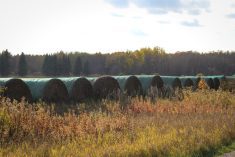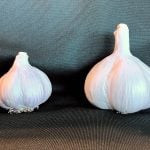Given the higher-than-usual levels of green seed in the 2010 canola crop, growers are being urged to seek more than one opinion on the grades of their own loads.
“Remember that ‘distinctly green’ is a subjective analysis, requiring graders to decide whether marginal lime green seeds count as ‘distinctly green’ or not,” the Canola Council of Canada said in a notice to growers released Wednesday.
Through most of Alberta and in Saskatchewan’s northeast, for example, less than 70 per cent of canola harvested in 2010 achieved No. 1 grade, based on Canadian Grain Commission (CGC) analyses.
Read Also

Brazil to reap record soy crop in 2025/2026, increase exports
Brazil’s Conab said the country will reap a record soybean crop of 177.6 million tons in the 2025/2026 harvest year, according to data released on Thursday.
Across the Prairies, 76.6 per cent of canola harvested in 2010 graded No. 1, down from 92 per cent in 2009, 95 in 2008 and 88 in 2007, the Winnipeg-based council said.
But subjectivity can make a substantial difference in the price and marketability of a load of canola if a grader counts 15 per cent green (No. 3) where another counts 25 per cent (Sample).
Growers unsure of what they’ve got can still send samples to the CGC, which provides a free grade as part of its Harvest Sample program, which ends Jan. 31. The CGC will also resolve disputed grades, the council noted.
Canola crushers want to see fewer than 25 milligrams of chlorophyll per kilogram of seed for No. 1 canola, and the CGC has a quick and much less subjective test that measures actual chlorophyll content. But until such equipment is available at elevators, “distinctly green” seed counts remain the grading factor, the council said.
Decisions
Growers are also advised to look further afield for buyers and, if need be, seek out companies that buy high-green canola.
“For growers with high-green canola in the bin, it helps to know what you’ve got (for green count) before you make marketing decisions,” the council said.
That means when a grower is shopping around for buyers, he or she had best make sure the submitted sample represents the canola that will be delivered. “Loads have been rejected because the canola delivered didn’t meet the specifications indicated in the original sample,” the council warned.
Growers who know they have high-green canola are also warned not to try and add water to bins in the hopes of reducing the green count.
“If canola in the swath gets rain and warm conditions, enzyme activity may restart and some of the green seeds can be reduced,” the council said. “But this doesn’t work as effectively on green locked in by frost, and it is very unlikely that sufficient water and heat can be added to canola in storage to safely recreate these conditions.”
Pending any hard research on the idea, the risk of losing a binload of canola to spoilage “almost certainly outweighs any potential benefit” one might get from lowering its green count with water, the council said.















